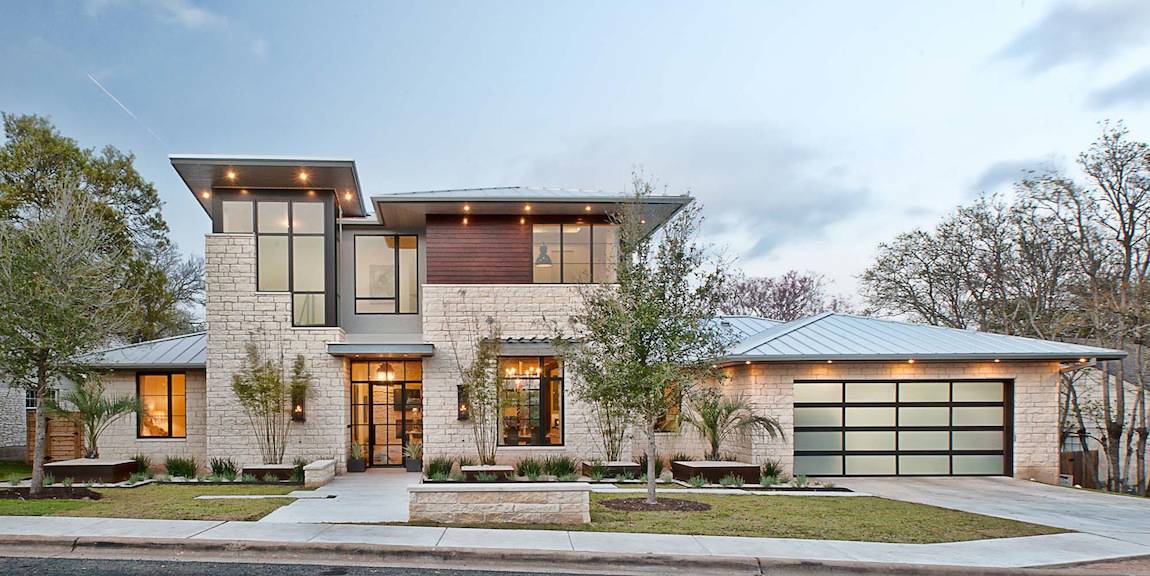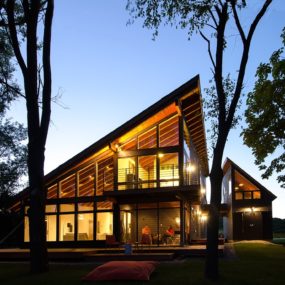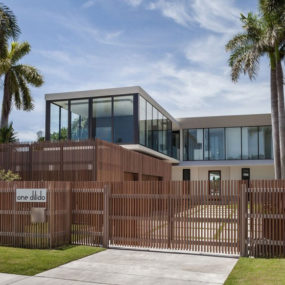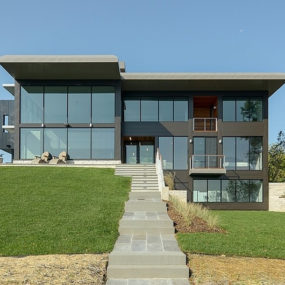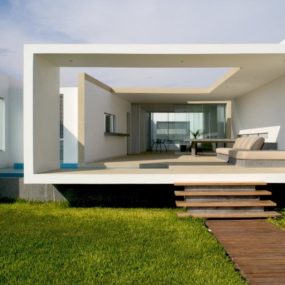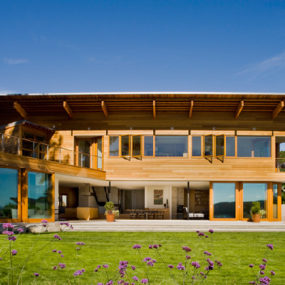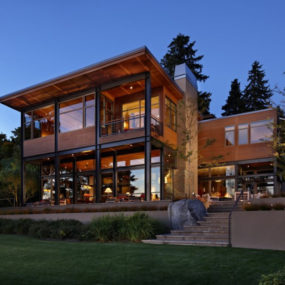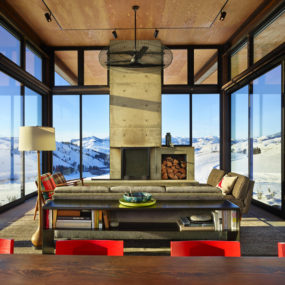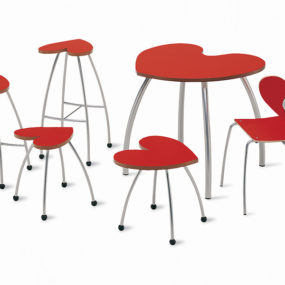
The Coopers Beach House is located in Northland, New Zealand. It is surrounded by other suburban homes, so the brief for Dorrington Architects & Associates was to create a home that offered privacy from the neighbours without compromising the views. The site location of the home required the front of the house to open up to the street and the back of the home to look out and over the surrounding landscape – including the lake. The site is almost flat allowing for easy indoor / outdoor accessibility and the architects took full advantage of this by designing a home with 4 individual zones. Each zone is both separate and connected to the other spaces. There is the bedroom block, the living pavilion, the garage as well as a corridor that links them all. The home is built with large sections of windows that can be stacked to one side, leaving each space either completely open to the outdoors, or closed up for a more intimate setting.
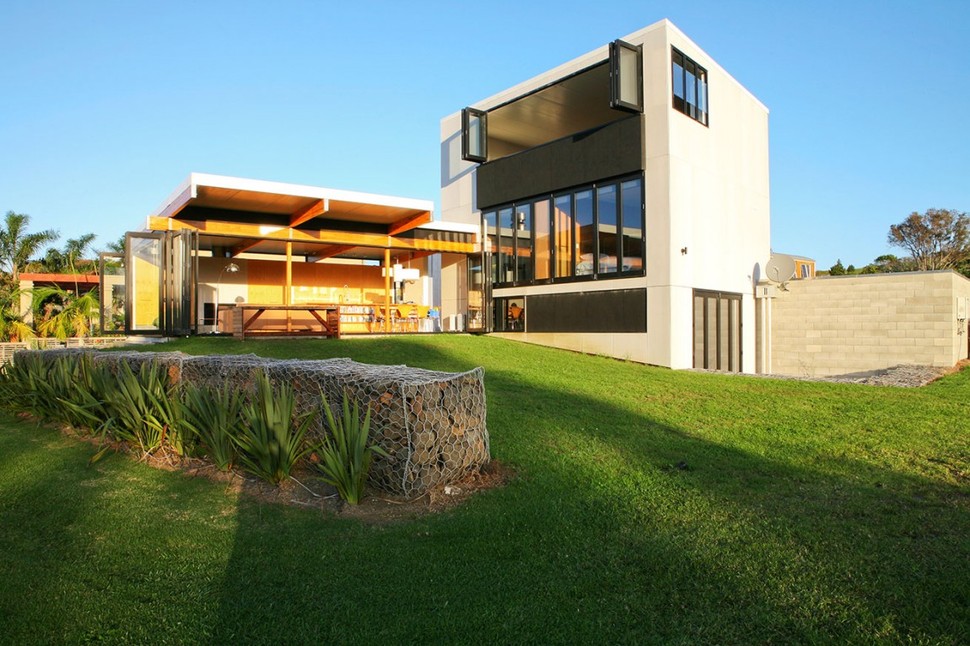
Two walls of the living pavilion can be completely opened up on the view side of the home, creating a space that is more outdoor then indoor. Both levels of the bedroom zone offer the same options. The only space that does not make use of the stackable windows is the garage just off to the side of the bedroom wing.

All the large expanses of windows are kept to the back portion of the home, keeping the street façade private and enclosed. A small walkway leads up to the entry corridor, which is encased in a translucent polycarbonate material. The living pavilion behind, offers a tall, narrow, double window located in the kitchen, and the 2nd story of the bedroom wing has an even narrower – and taller – window. The graphic components of the home are an interesting study of cube shapes with the varying sizes broken up by the glow of the interior lights.

The modest materials and simple restraint to the facade are matched only by the simple zeroscaping of plants, carefully chosen to survive on minimal water, and minimal upkeep.
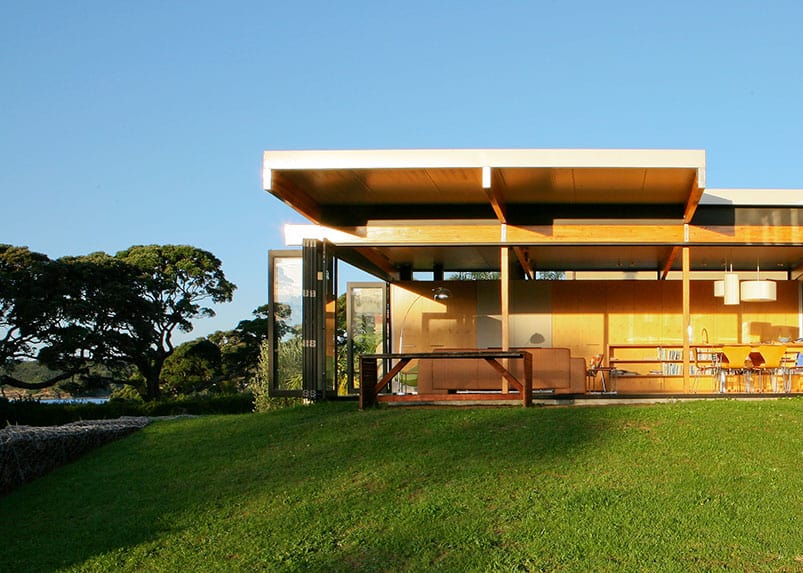
The very private and lakeside frontage of the living pavilion offers a much more complex façade. Here the architects combined several design features that all add to that indoor / outdoor lifestyle. There are the large glass windows that slide and stack out of the way; there is an overhanging roof for shade, and there is a post and beam construction to allow for minimal walls.

Inside the living pavilion is where the client’s personality explodes with a collection of retro seating, contemporary lighting, and rows of books for a relaxing evening in front of the fire.
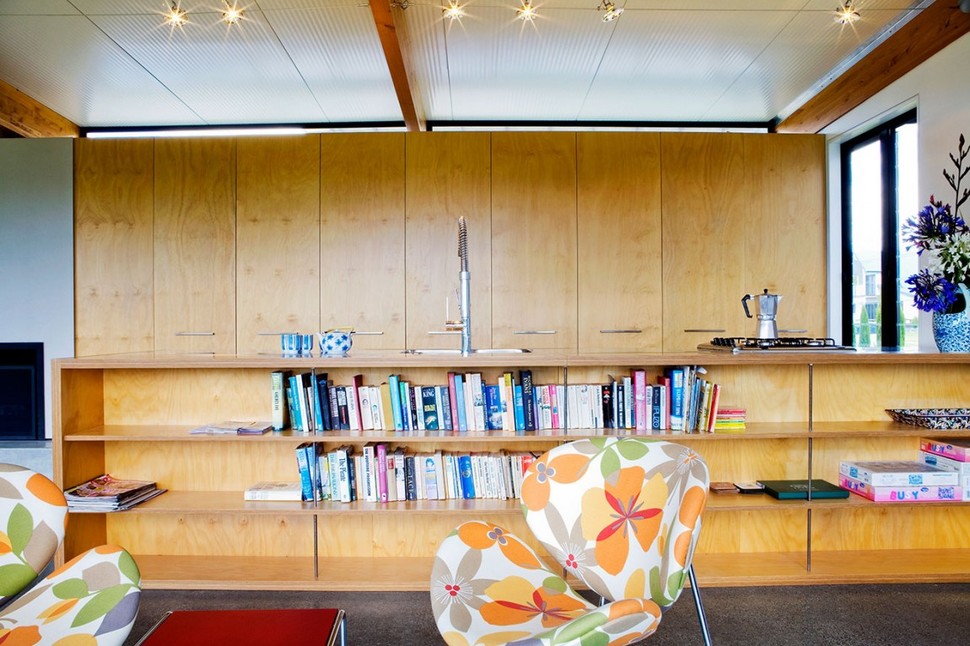
Embracing the retro décor, two of the chairs are reupholstered in a large and bold flower power pattern. The orange shades of the flowers play off of the plywood cabinetry in the Galley Kitchen, while the grey flowers tie in with the flooring.
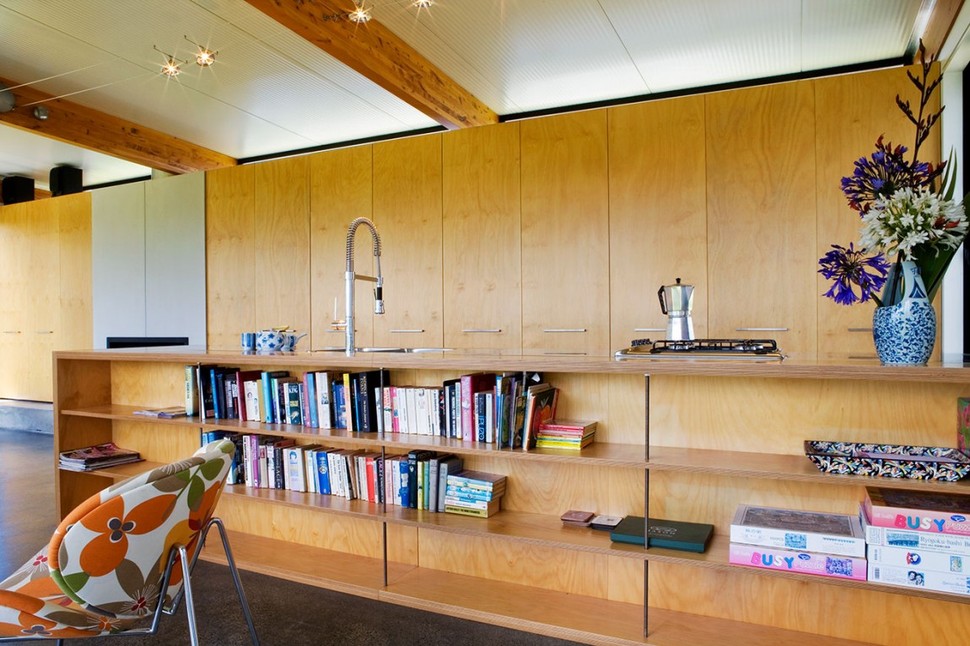
The floor to ceiling cabinetry on the wall side of the kitchen continues the complete length of the wall creating an incredible amount of storage for the home. A large Goose neck Faucet stands proud behind the bookshelves.
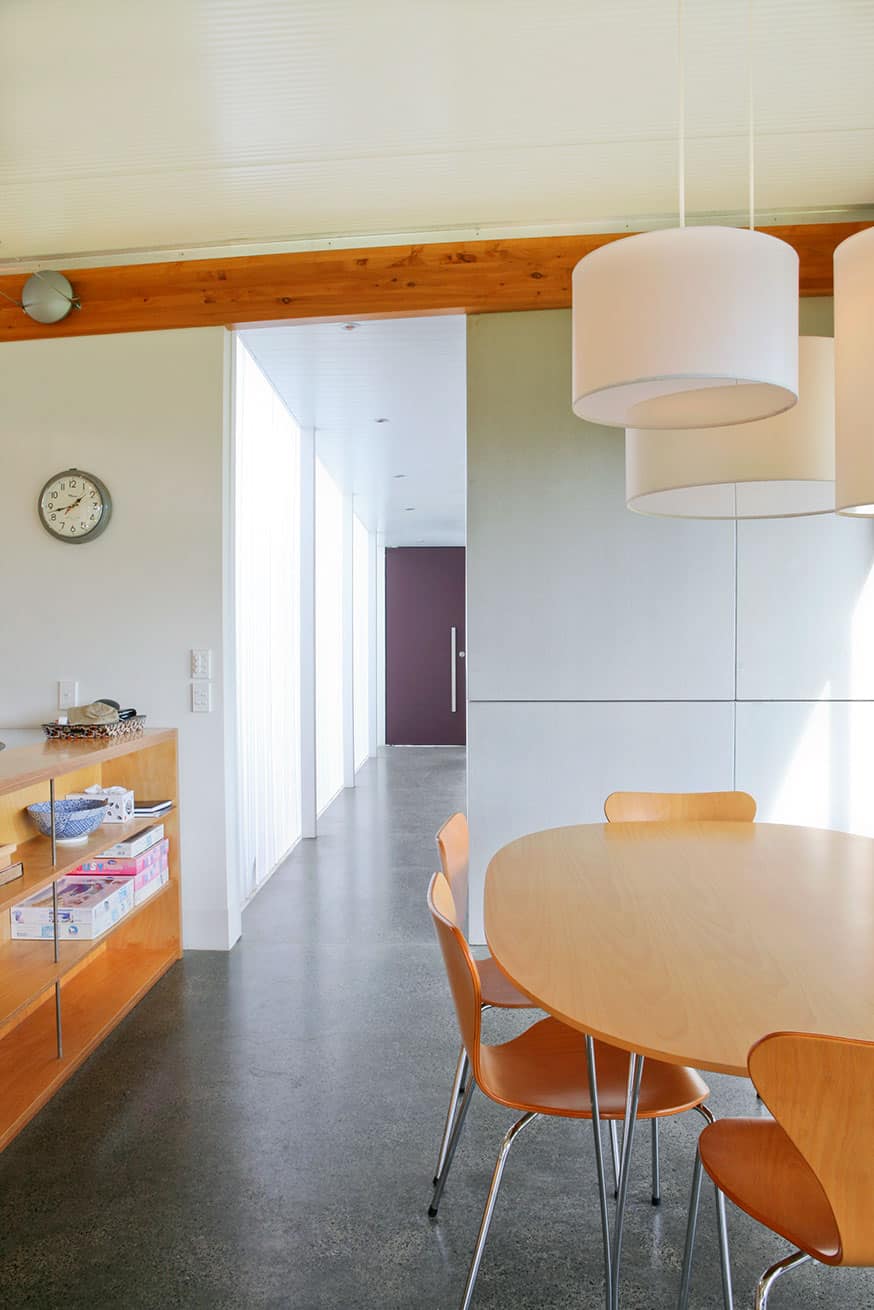
On the other side of the kitchen is the wall with the two tall narrow windows seen from the street view. This wall finishes in line with the kitchen peninsula and then turns to become the long wall of the entry corridor. On the other side of the corridor is the dining area with 3 large white drum shades that offer a dramatic focal point over the clean lines of the Beach wood Arne Jacobson B611 Table and Series 7 Chairs.
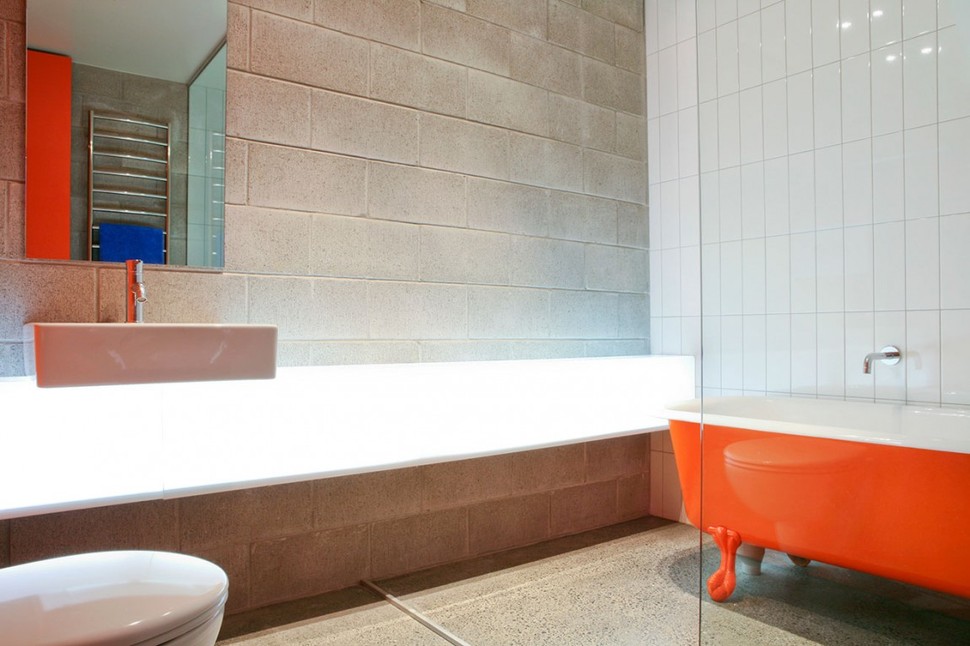
The washroom is a study of contrasts. A bold fiery orange claw foot tube is juxtaposed against the clean lines of a white floating vanity. Concrete blocks in a horizontal subway pattern are met with bright white tiles in a vertical stacked pattern.
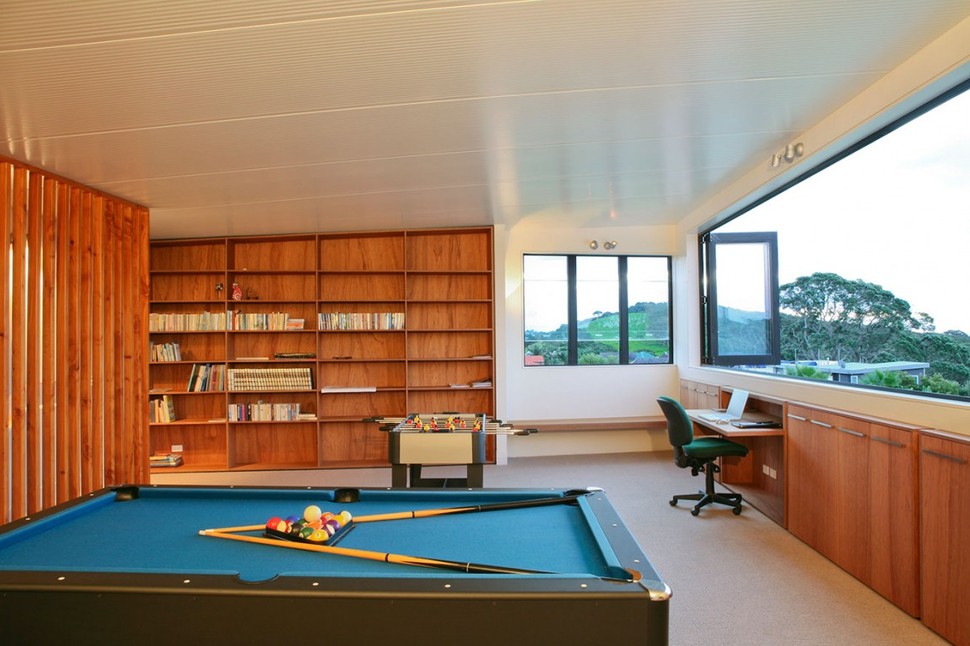
Upstairs in the bedroom wing is a family room of hidden pleasures – and maybe a little studying. A large pool table felted in a stunning shade of Cobalt Blue is just waiting to be played. A complete wall of shelves supports the family’s book collection and along the window wall a small desk opens up creating a laptop station with the most amazing view.
Dorrington Architects & Associates
